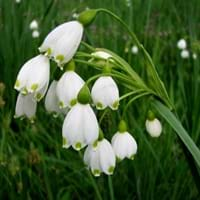Life Span
Perennial
Perennial
Type
Flowering Plants, Shrubs
Bulb or Corm or Tuber
Origin
Northeastern United States, Mid-Atlantic United States, Southeastern United States, North-Central United States, Central United States, South-Central United States, Canada
Europe, Mediterranean, Northern Africa, Western Asia
Types
Bigleaf hydrangea, Hortensia, Smooth hydrangea, Oakleaf hydrangea, Annabelle
Not available
Number of Varieties
Not Available
Habitat
Forest edges, Hillside, Woods
Damp shady woods, Hedgebanks, Mediterranean region
USDA Hardiness Zone
3-9
Not Available
AHS Heat Zone
9*1
Not Available
Habit
Upright/Erect
Clump-Forming
Minimum Width
30.00 cm
Not Available
Flower Color
Yellow, Gold
White, Light Pink
Flower Color Modifier
Bicolor
Bicolor
Fruit Color
Not Available
Not Available
Leaf Color in Spring
Green, Light Green
Green
Leaf Color in Summer
Green, Light Green
Light Green
Leaf Color in Fall
Green, Light Green
Several shades of Green
Leaf Color in Winter
Light Green
Light Green
Leaf Shape
Oblovate
Strap shaped
Plant Season
Early Spring, Late Autumn
Spring, Summer, Fall, Winter
Sunlight
Full Sun, Partial Sun
Full Sun, Partial Sun, Partial shade
Type of Soil
Clay, Loam, Sand
Loam, Sand
The pH of Soil
Acidic, Neutral, Alkaline
Acidic, Neutral, Alkaline
Soil Drainage
Well drained
Well drained
Bloom Time
Late Summer, Early Fall, Fall
Early Spring, Spring, Late Spring, Early Summer, Late Summer, Winter, Late Winter
Tolerances
Drought
Drought, Light Frost, Variety of soil types
Where to Plant?
Container, Ground
Ground, Pot
How to Plant?
Seedlings, Stem Planting
Divison, Seedlings, Seperation
Plant Maintenance
Medium
Low
Watering Requirements
Not Available
Needs less watering
In Summer
Drought Tolerant, Average Water
Lots of watering
In Spring
Moderate
Moderate
In Winter
Average Water
Average Water
Soil pH
Acidic, Neutral, Alkaline
Acidic, Neutral, Alkaline
Soil Type
Clay, Loam, Sand
Loam, Sand
Soil Drainage Capacity
Well drained
Well drained
Sun Exposure
Full Sun, Partial Sun
Full Sun, Partial Sun, Partial shade
Pruning
Remove damaged leaves, Remove dead branches, Remove dead leaves
Remove damaged leaves, Remove dead branches, Remove dead leaves
Fertilizers
All-Purpose Liquid Fertilizer
Bulb fertilizer
Pests and Diseases
Red blotch
Narcissus Bulb Fly, Slugs
Plant Tolerance
Drought
Drought, Light Frost, Variety of soil types
Flower Petal Number
Single
Single
Foliage Texture
Medium
Fine
Foliage Sheen
Matte
Matte
Attracts
Birds, Butterflies
Ants, Bees, pollinators
Allergy
Chest tightness, Diarrhea, Dizziness, Nausea, Vomiting
Not Available
Aesthetic Uses
Not Available
Beautification, Bouquets, Cottage Garden, Ground Cover, Showy Purposes
Beauty Benefits
Not Available
Anti-ageing
Edible Uses
Not Available
Yes
Environmental Uses
Air purification
Air purification
Medicinal Uses
Fever, Kidney problems, Urinary tract problems
Alzheimer’s Disease
Part of Plant Used
Flowers, Root
Flowers, Root
Other Uses
Not Available
Used as Ornamental plant
Used As Indoor Plant
Not Available
No
Used As Outdoor Plant
Yes
Yes
Garden Design
Cutflower, Feature Plant, Mixed Border, Wildflower
Alpine, Container, Cutflower, Lawns and Turf, Mixed Border, Rock Garden / Wall, Wildflower
Botanical Name
HELIANTHUS strumosus
Leucojum aestivum
Common Name
Paleleaf Woodland Sunflower, Woodland Sunflower
Leucojum, summer snowflake
In Hindi
Hydrangea
Leucojum
In German
Hortensie
Leucojum
In French
Hortensia
Leucojum
In Spanish
Hortensia
Leucojum
In Greek
υδραγεία
Leucojum
In Portuguese
Hortênsia
Leucojum
In Polish
Hortensja
Leucojum
In Latin
Hibiscus
Leucojum
Phylum
Not Available
Magnoliophyta
Class
Not Available
Liliopsida
Order
Not Available
Liliales
Family
Asteraceae
Liliaceae
Genus
Not Available
Leucojum
Clade
Not Available
Angiosperms, Monocots
Tribe
Not Available
Not Available
Subfamily
Not Available
Amaryllidoideae
Number of Species
Not Available
Properties of Woodland Sunflower and Leucojum
Wondering what are the properties of Woodland Sunflower and Leucojum? We provide you with everything About Woodland Sunflower and Leucojum. Woodland Sunflower doesn't have thorns and Leucojum doesn't have thorns. Also Woodland Sunflower does not have fragrant flowers. Woodland Sunflower has allergic reactions like Chest tightness, Diarrhea, Dizziness, Nausea and Vomiting and Leucojum has allergic reactions like Chest tightness, Diarrhea, Dizziness, Nausea and Vomiting. Compare all the properties and characteristics of these two plants. Find out which of these plant can be used as indoor plant. If you are interested to decorate your house and garden, find out aesthetic uses, compare them and select the plant which will beautify your surrounding. Along with beautification, try comparing medicinal and edible uses of Woodland Sunflower and Leucojum and you can choose the plant having best and most benefits.
Season and Care of Woodland Sunflower and Leucojum
Season and care of Woodland Sunflower and Leucojum is important to know. While considering everything about Woodland Sunflower and Leucojum Care, growing season is an essential factor. Woodland Sunflower season is Early Spring and Late Autumn and Leucojum season is Early Spring and Late Autumn. The type of soil for Woodland Sunflower is Clay, Loam, Sand and for Leucojum is Loam, Sand while the PH of soil for Woodland Sunflower is Acidic, Neutral, Alkaline and for Leucojum is Acidic, Neutral, Alkaline.
Woodland Sunflower and Leucojum Physical Information
Woodland Sunflower and Leucojum physical information is very important for comparison. Woodland Sunflower height is 90.00 cm and width 30.00 cm whereas Leucojum height is 7.60 cm and width Not Available. The color specification of Woodland Sunflower and Leucojum are as follows:
Woodland Sunflower flower color: Yellow and Gold
Woodland Sunflower leaf color: Green and Light Green
Leucojum flower color: White and Light Pink
- Leucojum leaf color: Green
Care of Woodland Sunflower and Leucojum
Care of Woodland Sunflower and Leucojum include pruning, fertilizers, watering etc. Woodland Sunflower pruning is done Remove damaged leaves, Remove dead branches and Remove dead leaves and Leucojum pruning is done Remove damaged leaves, Remove dead branches and Remove dead leaves. In summer Woodland Sunflower needs Drought Tolerant, Average Water and in winter, it needs Average Water. Whereas, in summer Leucojum needs Lots of watering and in winter, it needs Average Water.

